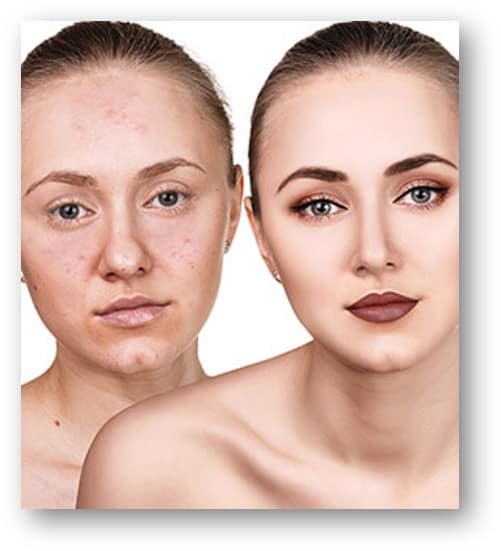Understanding Actinic Keratosis
Caring for the Health and Beauty of Skin for over 40 years
Also known as solar keratosis, actinic keratosis affects more than 10 million Americans. These precancerous growths on the skin are caused by overexposure to the sun over a long period of time. They are characterized by rough dry lesions or patches that appear on sun-exposed areas of the skin, such as the face, back of hands, arms, scalp or shoulders. The lesions may be red, pink, gray, or skin-colored. Lesions often begin as flat, scaly areas and develop into a rough-textured surface. Sometimes it is easier to feel a growth than it is to see it.
Actinic keratosis is more common among fair-skinned people and those who have had years of outdoor or tanning bed exposure to ultraviolet light. Actinic keratosis can develop into malignant cells, typically squamous cell carcinoma, which is a type of skin cancer. That's why treatment is important. After a physical examination and biopsy of the lesion, your dermatologist will opt for one of the following treatments to remove the growth:
- Cryosurgery, which freezes off the growth using liquid nitrogen.
- Surgical removal in which the doctor scrapes off the lesion and bleeding is stopped by electrocautery.
- Chemical peels that cause the top layer of skin to peel off.
- Photodynamic therapy in which a dye is applied that sensitizes the skin to light and the area is then exposed to light via a laser or other light source.
- Topical Nonsteroidal Anti-Inflammatory Drugs (NSAIDS) that cause a slow inflammation and peeling; used in more superficial cases.
- Topical Chemotherapeutic agents (5 Fluorouracil, Aldara) can also be used.
Photodynamic Therapy (PDT) a common and very effective way to treat Actinic Keratoses. The Farah doctors have been treating patients with PDT for a number of years. Of note, Dr. Joyce Farah is a specialist in PDT, having performed a fellowship in photodynamic therapy at the prestigious Roswell Park Cancer Institute in Buffalo, NY.

01
Schedule a Consultation
As you start your journey for better skin or a better body you'll need to schedule a consultation with one of our world-class specialists.
02
See a Specialist
During the consultation, the doctor will review your individual skin or body needs to provide a recommendation for maximum results
03
Start Treatment
Treatments will vary based on your individual conditions and needs. With over 60 years of experience, we will give you the best care possible.
04
Amazing Results
As you start your treatment, follow-ups may be required. Our goal is to ensure we exceed your expectations as your appearance is a reflection of us.
